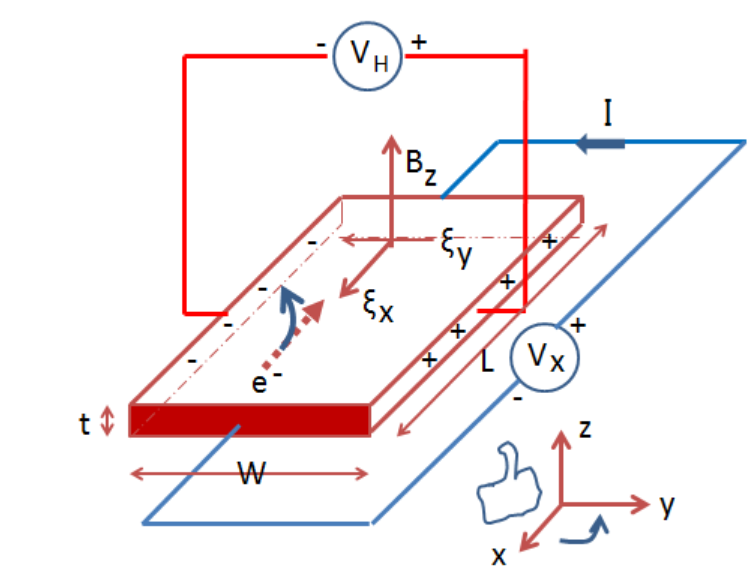Question
Question: The hall effect turned out to be not observable in a semiconductor whose conduction electron mobilit...
The hall effect turned out to be not observable in a semiconductor whose conduction electron mobility was η=2.0 times that of the hole mobility. Find the ratio of hole and conduction electron concentrations in that semiconductor.
Solution
Hall effect may not be observable in some materials because conduction can involve significant, simultaneous contributions from both electrons and holes, which may be present in different concentrations and have different mobilities. We should remember the formula of electron mobility and current density to solve this.
Complete step by step solution:
When the sample contains an unequal number of carriers of both types whose mobilities are different, static equilibrium (no transverse movement of either electron or holes) is impossible in a magnetic field. The transverse electric field acts differently on electrons and holes.

If the Ey is an electric field along the y-direction in the presence of the magnetic field B. And let the drift velocities of electrons and holes in x-direction be ve and vh. The net Lorentz force per unit charge (effective transverse electric field) on electrons is
Ey−veB
And on holes is
Ey+vhB
Now there is a transverse drift of electrons and holes and the net transverse current must be zero in equilibrium.
Therefore, the sum of the mobilities of the electrons and holes must be zero. Applying that in the mobility equation we get
μenee(Ey−μeExB)+μhnhe(Ey+μhExB)=0 (since v=μEx)
Where μis the mobility, e is the electronic charge and n is the concentration.
Rearranging the equation we get
Ey=neμe+nhμhneμe2−nhμh2ExB
And we know the current density (jx) is
jx=(neμe+nhμh)eEx
Thus the Hall coefficient (RH) is
RH=jxBEy
Substituting the values we get
RH=e1(neμe+nhμh)2neμe2−nhμh2
Now since the Hall effect is not observed in the semiconductor the coefficient will be zero.
Therefore equating the above equation to zero we get,
nhne=(μhμe)2
Now η=0.2 (given)
Therefore nhne=η21
⇒nhne=41
Which is the required ratio.
Note: Hall effect is the production of the voltage difference. It is caused across an electric conductor and is transverse to this electric current. It refers to the product of magnetic induction and current density when a magnetic field works perpendicular to the current flow.
